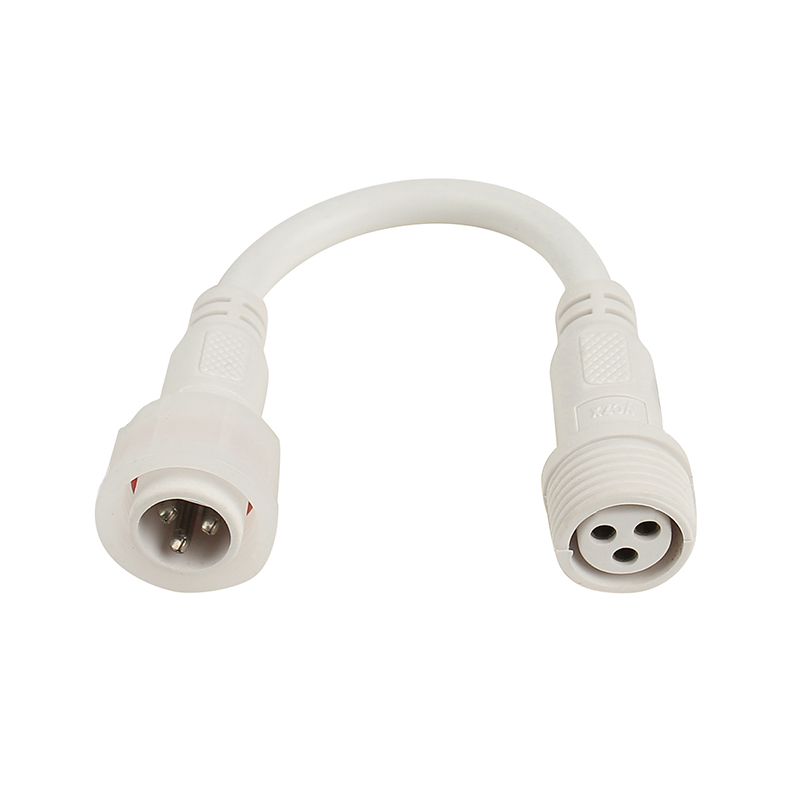News


News

Troubleshooting & Maintenance Guide for 3-Pin Waterproof Extension Cord Connectors
Release time:2025-04-10
viewed:280
3-pin waterproof extension cord connectors are built to survive rain, dust, and rough handling—but even the toughest gear needs care. Whether you’re powering tools on a construction site or lighting up a backyard party, this guide will help you fix common issues and extend your connector’s lifespan. Let’s dive into troubleshooting, repairs, and pro maintenance tips!

Symptoms: Flickering lights, tools cutting out randomly.
Causes: Oxidized contacts, loose pins, or debris.
Fix:
Disconnect Power: Safety first! Unplug the connector.
Clean Contacts: Dab a cotton swab in isopropyl alcohol and scrub the pins.
Check Fit: Ensure male/female connectors mate snugly—no wiggling!
Pro Tip: For heavily corroded pins, use a contact cleaner spray and a soft brush.
Symptoms: Tripped breakers, burnt smells, or no power.
Causes: Failed seals, cracked housings, or improper sealing.
Fix:
Disassemble: Remove screws/open the connector.
Dry Components: Use compressed air or a heat gun (low setting) to dry terminals.
Re-Seal: Apply epoxy potting compound to internal voids and reassemble.
Warning: If terminals are burnt, replace the connector immediately.
Symptoms: Melted plastic, discolored pins.
Causes: Overloading (exceeding 16A) or poor contact.
Fix:
Downgrade Load: Stick to the rated current (e.g., 16A/250V).
Upgrade Connectors: Use industrial-grade models for heavy machinery.
Replace O-Rings:
Pry out old O-rings with a pick tool.
Lubricate new silicone O-rings with dielectric grease before fitting.
Re-Grease Threads: Apply silicone grease to threads to prevent seizing.
Inspect Cables: Look for fraying near the connector.
Use Strain Relief Boots: Prevent tugging from damaging internal seals.
Dry First: Wipe connectors dry before storing.
Avoid Sunlight: UV degrades plastic housings—store in a toolbox or shaded area.
IP Ratings Matter: Choose IP67/IP68 connectors for submersion-prone uses (e.g., pools, boats).
Material Matters: Nylon housings for impact resistance, TPE for flexibility.
Torque Correctly: Tighten threaded connectors to 0.8–1.2 N·m (use a torque screwdriver).
Seal Cable Entries: Wrap cables with self-amalgamating tape at entry points.
Monthly Visual Checks: Look for cracks, corrosion, or loose parts.
Annual Load Test: Use a multimeter to verify continuity and resistance (<0.5Ω per pin).
A little maintenance goes a long way with 3-pin waterproof extension cord connectors. By cleaning contacts, replacing seals, and avoiding overloads, you’ll keep power flowing safely—no matter the weather.